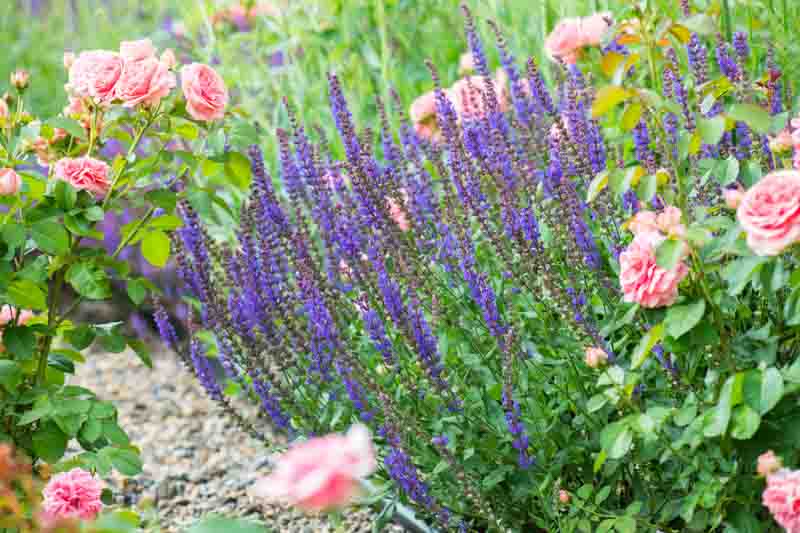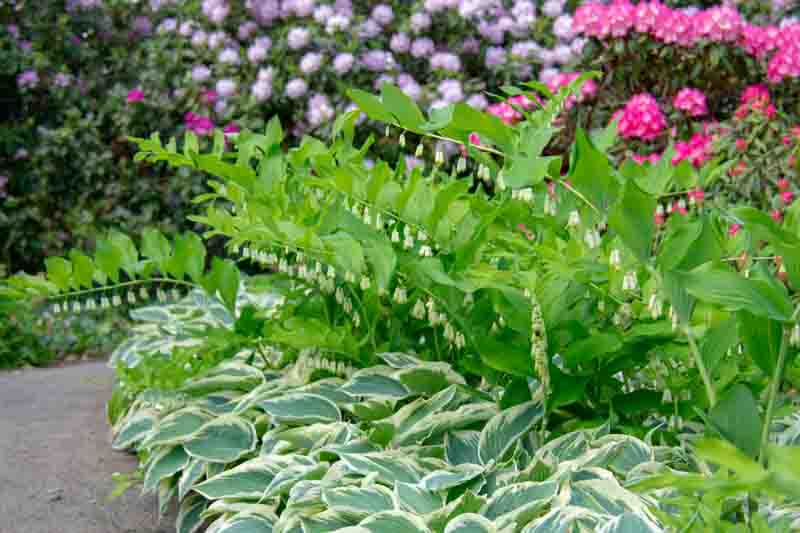What is a Perennial? Selecting Perennial Flowers and Plants that are Best for Your Garden
Perennials are a diverse and vital garden part, offering beauty, utility, and sustainability. Choosing the right ones involves considering your garden’s specific conditions and requirements and personal aesthetic preferences. With proper care and selection, perennials can provide a rich and dynamic landscape that evolves and matures beautifully over time.
A perennial plant lives for more than two years, contrasting with annuals, which complete their lifecycle in a single year, and biennials, which take two years to complete theirs. Perennials are known for their longevity and ability to bloom year after year, making them a staple in many gardens.
Perennial and annual plants are two types of flowering plants distinguished mainly by their life cycles:

Salvia (Sage) and Roses
Herbaceous Perennials: These plants die back to the ground each winter and regrow from their rootstock in the spring. Examples include coneflowers, black-eyed Susans, sage, and cranesbill.
Woody Perennials: These include shrubs and trees, like roses, azaleas, and maple trees, which have woody stems that stay above ground year-round.
Evergreen Perennials: These plants retain their leaves throughout the year, providing continuous greenery. Examples are boxwood and some types of ferns.
Deciduous Perennials: They lose their foliage in winter and regrow it in spring, such as hydrangeas and some ornamental grasses.

Shade Perennials: Hosta and Solomon’s Seal
Consider Climate and Hardiness Zone: Select plants suited to your area’s climate and temperature. The USDA Hardiness Zone system can be a helpful guide.
Soil Type and Sunlight: Understand the soil type in your garden and the amount of sunlight it receives. Some plants thrive in full sun, while others prefer shade or partial shade.
Growth Patterns and Maintenance: Consider the plant’s mature size and growth habit. Some plants spread rapidly and may require regular pruning or dividing.
Bloom Time and Color: Plan for a succession of blooms through the seasons for a year-round colorful garden. These plants come in a wide range of colors and blooming seasons.
Water Requirements: Consider drought-tolerant varieties if you live in a water-scarce region.
Wildlife Attraction: Many perennials attract pollinators like bees, butterflies, and birds, contributing to a healthy ecosystem in your garden. Opt for deer-resistant perennials or rabbit-resistant perennials if these animals are a problem in your area.
Personal Preference: Choose colors, sizes, and forms that appeal to your personal taste and complement the overall design of your garden.
Create a membership account to save your garden designs and to view them on any device.
Becoming a contributing member of Gardenia is easy and can be done in just a few minutes. If you provide us with your name, email address and the payment of a modest $25 annual membership fee, you will become a full member, enabling you to design and save up to 25 of your garden design ideas.
Join now and start creating your dream garden!
Create a membership account to save your garden designs and to view them on any device.
Becoming a contributing member of Gardenia is easy and can be done in just a few minutes. If you provide us with your name, email address and the payment of a modest $25 annual membership fee, you will become a full member, enabling you to design and save up to 25 of your garden design ideas.
Join now and start creating your dream garden!